Passion, politics and painting: Seven facts uncovering the real Frida Kahlo
7 March 2023
Becoming Frida Kahlo is a new three-part BBC Arts series that charts the passionate and brilliant Mexican artist's extraordinary life. Here are seven surprising things we learned from this striking documentary exploring the politics, power, sex and identity at the heart of Kahlo's story.

Frida Kahlo changed her date of birth for an unusual reason

Frida Kahlo was born in 1907 but she claimed her date of birth to be in 1910, in order to align it with the start of the Mexican Revolution.
1910 was the beginning of a turbulent decade in Mexico, during which different factions fought for supremacy. Power changed hands many times and the old colonial order was overturned.
For Frida, this act made a statement about her devotion to Mexican culture.
The following decade, the 1920s, saw an extraordinary flourishing of art. Mexico City became a thriving hub for artists and intellectuals from all over the world, and Frida was at the heart of it.

From an early age, Frida embraced being different

Following Frida's polio diagnosis at the age of six, a shortened right leg meant she walked with a limp and this led to her being bullied at school.
In Mexico we say 'what doesn't kill you makes you stronger'.Cristina Kahlo, Frida's great-niece
Looking back at her childhood, she said: "At first, I assumed that the children’s taunts wouldn’t affect me, but later, they really did. And each time, worse."
However, the insults failed to crush her spirit.
Cristina Kahlo, Frida's great-niece, tells the programme: "In Mexico we say 'what doesn't kill you makes you stronger'."
As Frida grew up, she began to embrace the fact that she was a bit different. She developed her own sense of style, often wearing clothes seen traditionally as male.

A brush with death set her art career in motion

In 1925, Frida was travelling home from Mexico City on a rickety bus with her boyfriend Alejandro Gomez Arias, when a tram ploughed into them.
I noticed with horror, Frida had a piece of iron in her bodyAlejandro Gomez Arias, Frida's teenage boyfriend
Looking back in later years, Alejandro said: "Naturally, the first thing that I did was to look for Frida. I picked her up, and then I noticed with horror, Frida had a piece of iron in her body."
A metal handrail had pierced her body, and doctors feared she would die during emergency surgery.
During her long recovery, Frida spent many hours alone. In those moments, she entertained herself by painting. Her mother made an easel adapted for her to paint in bed.
She began by painting portraits of her sisters and friends, and gradually her confidence increased and her art began to demonstrate real ambition.

A superstar artist helped to inspire her

By the 1920s, Mexican art was flourishing and Diego Rivera was one of the most celebrated artists in the world.
He told me that I should try to paint whatever I wanted, without being influenced by anyone elseFrida Kahlo, on Diego Rivera
Famed for his mural paintings, many of his artworks represented his strong Communist beliefs.
Frida first encountered Diego while at school, when she heard him deliver a lecture about Russia. Their first actual meeting came after Frida's accident, when she approached him while he was painting a mural.
According to art historian Gannit Ankara, Frida was not at all intimidated by the famous artist.
"She ordered him to come down from the scaffold, then said, 'Listen, Diego, I need to make a living. Please look at these and tell me if I am good enough.'
"She didn’t have many, but she’d painted a few portraits, some of them quite good."
According to Frida, "He told me that I should try to paint whatever I wanted, without being influenced by anyone else.
"That impressed me a lot, and I began to paint what I believe in."

She married that superstar artist... twice

Diego Rivera was 21 years older than Frida, who became his third wife in 1929.
She must have hated him a lot of the time, but that doesn't mean she didn't love himHayden Herrera, Frida Kahlo biographer
They were a strikingly different couple - when they married, Frida's parents called them ‘the elephant’ and ‘the dove’.
It was a stormy marriage, with both having numerous affairs. Frida had affairs with men and women.
They divorced in 1939 but a year later they remarried, remaining together until Frida's death in 1954 at the age of 47.
Frida Kahlo biographer Hayden Herrera tells the programme: "I really believe her, when Frida said that she loved him more than her own life.
"She must have hated him a lot of the time, but that doesn't mean she didn't love him.”
Art historian Luis-Martín Lozano says: "You can't have Frida Kahlo if you don't understand Diego comes first.
"Art itself is not enough. At the end, where is this woman without the person she loves?”

Frida had a brief affair with a famous Communist leader

Leon Trotsky was a key figure in the Bolshevik seizure of power in Russia, second only to Vladimir Lenin in the early stages of Soviet communist rule.
Trotsky is somebody she admired because he was a survivor. He was a revolutionaryLuis-Martín Lozano, art historian
Trotsky lost out to Joseph Stalin in the power struggle that followed Lenin's death, and was eventually expelled from the Soviet Union in February 1929. He would live in exile for the rest of his life, and in 1936 he moved to Mexico.
By that time, Frida's husband Diego, himself an ardent Communist, had been having an affair with her sister for several years.
Art historian Luis-Martín Lozano says: "Trotsky is somebody she admired because he was a survivor. He was a revolutionary.
"So, because she's attracted to his level of intelligence, why not become closer to Trotsky?"
Frida even created a painting called Self-Portrait Dedicated to Leon Trotsky. However, the affair did not last long.
In 1940 a Soviet NKVD assassin, acting on Stalin's orders, killed Trotsky with an ice axe in Mexico City. An estimated 300,000 people passed by his casket in the city in the days after his death.

One of her paintings fetched the record auction price for a Latin American artwork

In 2010, the Bank of Mexico added the images of Frida and Diego on either side of its 500 peso banknote.
The main image on Frida's side is a 1940 self-portrait. The design also incorporates her 1949 painting, The Love Embrace of the Universe, the Earth, Myself, Diego and Senor Xolotl.
Frida's paintings did not sell for huge amounts of money during her lifetime, but since her death her artistic reputation has soared.
In 2021, one of her final self-portraits, Diego y Yo, sold at Sotheby's auction house in New York for a record $34.9m. It was the highest price paid at auction for a work by a Latin American artist. The painting had previously been auctioned, in 1990, for $1.4m.
Biographer Martha Zamora tells the programme: "I love to see Frida claiming $34m for a small painting, because I know what it means for many others."


Who was Frida Kahlo really?
The politics, power, sex and identity at the heart of the artist's extraordinary story.
Becoming Frida Kahlo: New boxset on BBC iPlayer
-
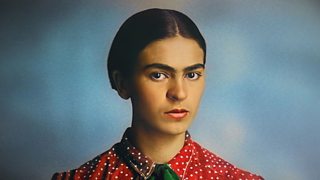
1. The Making And Breaking
When an accident changes Frida's life, she channels pain and heartache into a new passion: painting.
-
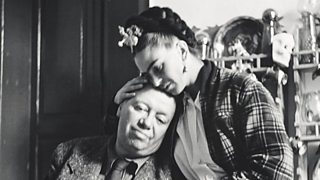
2. Love and Loss
Now married and living in 1930s America, Frida sees the ugly side of capitalism.
-
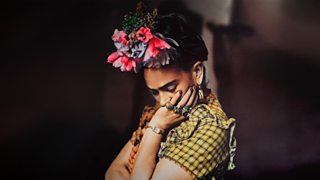
3. A Star is Born
Dangerous politics and turbulent love shock Frida's world, while her painting thrives.

More about Frida Kahlo
-
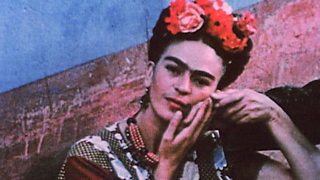
Fiery, fierce and passionate
The extraordinary life of Frida Kahlo, in her own words
-
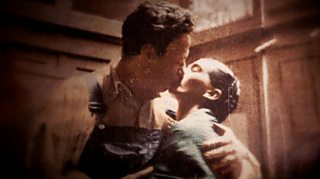
Quiz: Have you got Frida fever?
Do you know more than you think about the life and art of Frida Kahlo?
-
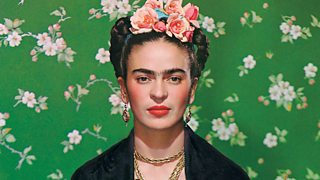
Uncovering the real Frida
Seven surprising facts we learned from the BBC iPlayer boxset Becoming Frida Kahlo
-

Self-portraits and the Frida Kahlo image
Frida Kahlo's self-portraits are famous, but do they reveal anything of her true self?
More from BBC Arts
-
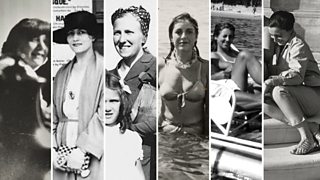
Picasso’s ex-factor
Who are the six women who shaped his life and work?
-
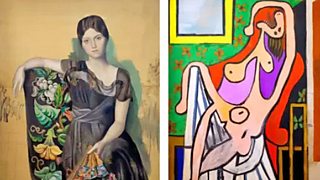
Quiz: Picasso or pixel?
Can you separate the AI fakes from genuine paintings by Pablo Picasso?
-

Frida: Fiery, fierce and passionate
The extraordinary life of Mexican artist Frida Kahlo, in her own words
-

Proms 2023: The best bits
From Yuja Wang to Northern Soul, handpicked stand-out moments from this year's Proms
Arts on iPlayer
-

Caroline Aherne: Queen of Comedy
Exploring a unique talent and body of work; with Sue Johnston, Ricky Tomlinson, Steve Coogan, Ralf Little & Lemn Sissay
-
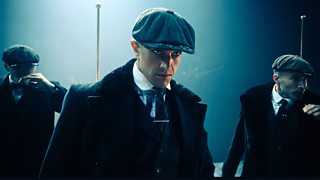
Peaky Blinders: Rambert’s The Redemption of Thomas Shelby
Thrilling stage adaptation performed by the Rambert dancers to an iconic soundtrack
-

Killing Sherlock: Lucy Worsley on the Case of Conan Doyle
The ultimate power struggle between the greatest detective who never lived and the writer who came to resent him
-

Shakespeare: Rise of a Genius
Acting legends reflect on the greatest writer who ever lived
